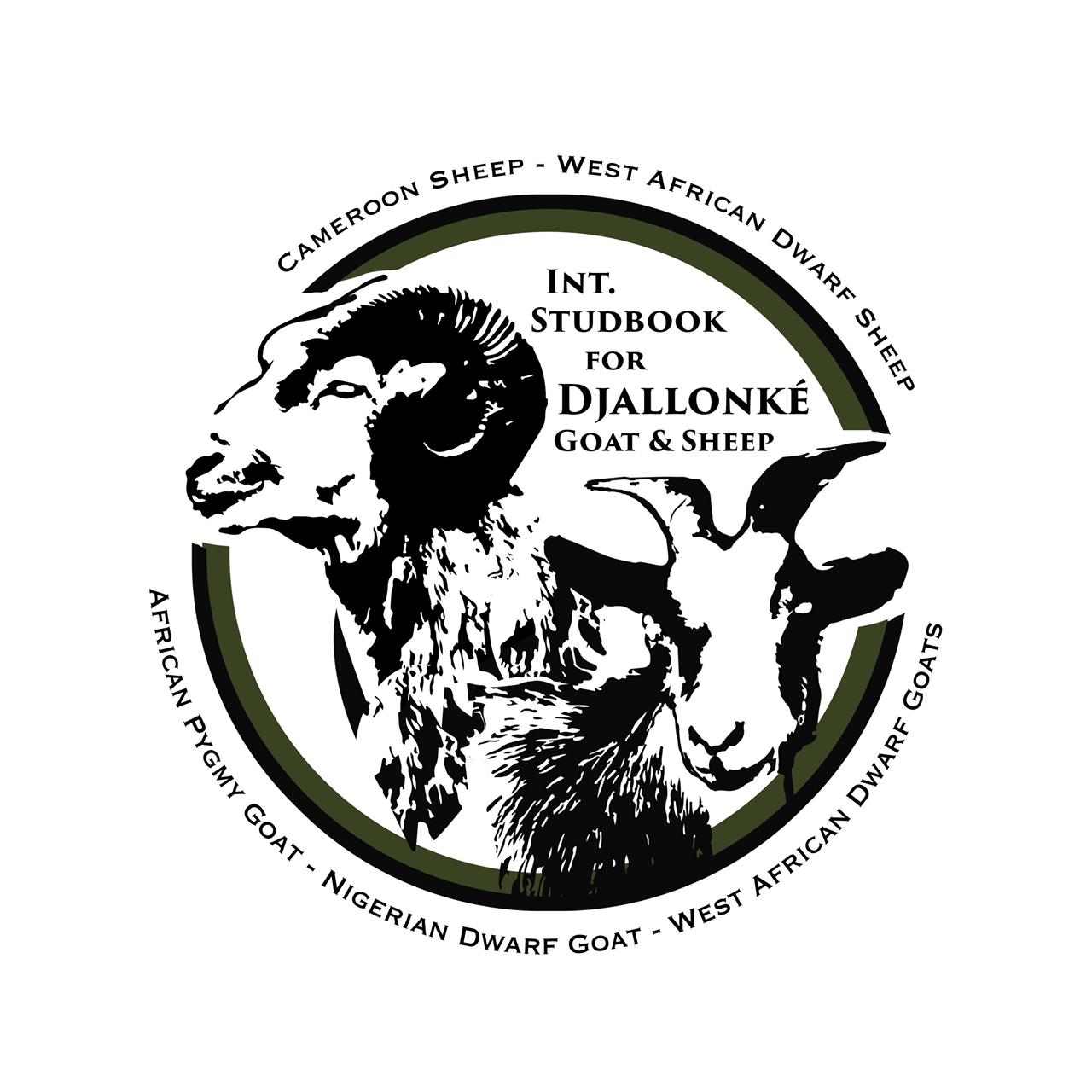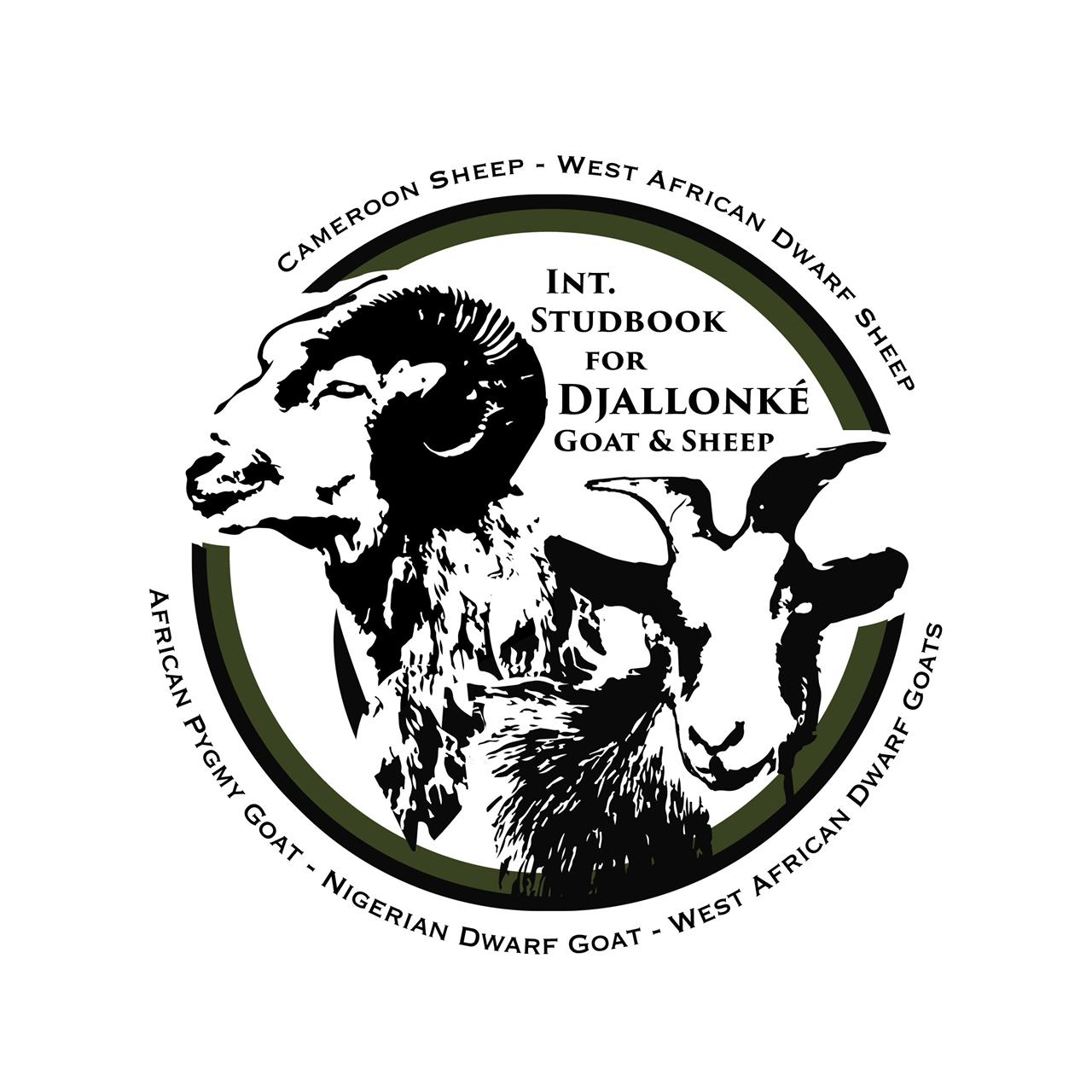Abstract
Sheep farming is a vital component in the food, economic and socio-cultural security of many countries around the world. Sheep are present in most countries of the world, proving their adaptation capacities to different climatic conditions and agro-ecological zones in different countries. Because of these capabilities, they have been widely disseminated in order to enhance their genetic potential. Several elements have contributed to the diversification and dissemination of this biodiversity, including the human slave trade waves. During these movements, Cameroon ovine biodiversity has been exported and distributed throughout the world, particularly the Blackbelly color variety of the Djallonké sheep breed. Within the framework of the World Action Plan focusing on the characterization of native biodiversity, it is important to trace the dispersal routes and models of this particular breed across the world in order to demonstrate the impact of slave trade in the dissemination of animal material, but also to collect information on the ways of adaptation and exploitation of the Blackbelly sheep around the world. This could enable the conservation and better improvement of this genetic resource in Cameroon for the benefit of population. From publications collected on the matter around the world, it appears that slave trade and the triangular trades were the main factors of global diffusion of the Cameroon Blackbelly sheep, the black bellied color variety of the Djallonké sheep. The Blackbelly has been spread in two continents: America and Europe, but its main settling area was the Caribbean. The Barbados Island was the main point of adaptation of this breed hence the name Barbados Blackbelly from which several countries have refueled.
The Blackbelly sheep has been adopted as an official breed after improvement (crossbreeding) in 4 countries:
- Barbados Island (Barbados Blackbelly)
- United States (American Blackbelly)
- Germany (Kamerun Schafe) CONFLICT IN NAME WITH PURE BRED DJALLONKE SHEEP alias CAMEROON SHEEP
- Martinique (Martinik Sheep)
All these varieties share some specific features that have remained very close to that of the sheep of Cameroon notably: the brown coat color with a blackbelly, resistance to diseases (trypanotolerant), hardy, and prolific. Worldwide, the Blackbelly sheep is exploited for meat, leather, prestige, ecotourism and milk in some extent. The current state of information on Blackbelly in Cameroon is limited to descriptive study and some phenotypic assessment. In-depth studies on its mode of exploitation and its molecular genetics will certainly allow better understanding of this breed to plan for methods of conservation and sustainable improvement.
Spreading factors and exploitation of Blackbelly sheep
The Blackbelly sheep by its qualities of adaptative production traits has been widely distributed in the world for a hair sheep. This has undoubtedly been favored by several factors such as triangular trade and the slave trade. This demonstrates that the method and chronology of dispersion of African animal breeds also have a nonnuclear cause (Hanotte et al., 2002). These two movements of the western colonial era have had a significant impact on the distribution of animal material, and more specifically on dwarf sheep in West Africa (Naves et al., 2011). One of the determining factors for the spread of Blackbelly sheep in the Caribbean and some Latin American countries were triangular trade with West African ports, simultaneously with human trafficking (Naves Met al., 2011). It resulted in recurrent introductions of domestic animals from West Africa, between the sixteenth century and the beginning of the nineteenth century (Maillard and Maillard, 1998). For instance, the analysis of mitochondrial DNA of some bovine genotypes in the Caribbean and America has demonstrated their African origin. In Asian chickens, nine different clades of mtDNA have been identified (Liu et al., 2006) that suggest multiple origins in South and Southeast Asia. These results indicate that the knowledge about farm animals’ domestication and genetic diversity is still largely incomplete. Therefore, it is established that there is a strong genetic component of African origin in the Caribbean countries’ sheep breeds (Blackbelly or Pelibuey), in the Creole goats of the Antilles (Pépin, 1994), and in the Creole cattle of Guadalupe (Miretti et al., 2004;Naves and 2011). Exchanges have also taken place between the Caribbean islands and the American continent, in the North as well as South (Maillard and Maillard 1998; Lucero et al., 2010). Expansion to the Caribbean and America (South and North) The Blackbelly sheep has had a large dispersal in the Caribbean and mainly in the Barbarian Island (Shelton et al., 1990). During the period of the slave trade, the triangular trade allowed the transit of goods between America, Europe and Africa. These movements across the Atlantic Ocean included several Caribbean countries (Cuba, Dominica, Jamaica, Trinidad and Tobago, Martinique, Barbados etc.). The ships from Africa transported slaves but also animals from Africa. This movement allowed the transport of African sheep breeds to the Caribbean. Historic research demonstrated that the Furry sheep in the Caribbean is of African origins, namely from Nigeria, Angola and Cameroon during the period of slave trade (Mason, 1980). The Barbados Barbados could be considered as the main area of installation and adaptation of Blackbelly sheep from Africa (later mentioned as Cameroonian sheep). According to the BBSAI (2011), the Blackbelly arrived in the Barbados Island during the period of colonization of the island by the Europeans. Combs (1979) has established that during the first quarter of the century of colonization, a batch of Blackbelly sheep was set up on the island following British colonization in 1627. This sheep adapted to this climate during the exchanges of the slave trade has medium and horizontal ears. It is called Barbados blackbelly with reference to Barbados which is at the origin of its expansion (Shelton et al., 1990). The pattern of Blackbelly color, which seems to be simply inherited, is found in the current populations of Djallonke type sheep in West Africa. This observation, and several other features that the breed shares with the West African sheep, including the shape and size of the ear, of course, the hair (Figure 1), indicates a West African origin for the Barbados Blackbelly sheep breed. However, the latter has two distinctive features, namely: a larger average size of all "West African" populations, and higher prolificacy (Fitzhugh and Bradford, 1980). It is a larger sheep than Cameroon sheep and is generally used for meat production. Ewes raised from 1972 to 1977 at three locations in Barbados produced 1079 litters of milk, with 2194 lambs, an average of 2.03 lambs per litter, and at an average lambing interval of 8.48 months. Rastogi et al (1980) observed 26.8% single birth, 47.3% twins, 22.1% triplets, 3.4% quadruplets and 0.4% quintuplets.
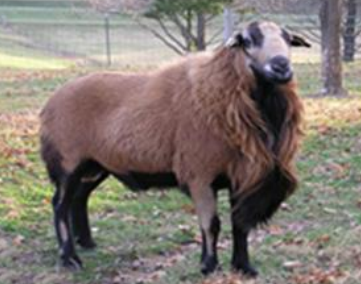
Figure 1: Barbados Blackbelly ram
Cuba
According to Mason (1980), the Cuban sheep apparently also came from Africa. It is estimated that about 75% of sheep in Cuba are hair breeds originally called Pelobuey Carnero (that is, beef-haired sheep) that has been shortened to Pelibuey. These sheep are also called Criollo, but they differ from the real Criollo of the mainland of Latin America, which are wool sheep of the Churro breed of Spain (Shelton et al., 1990). Pelibuey sheep have a variety of colors, including brown (or red), cream whitish and white, black, and more. The first three colors are the most common and are colors that would be inherited from their African origins. Pelibuey sheep on state farms are either red or white. Red animals, which are believed to be physically stronger, are preferred. In addition, the red color is dominant in the Pelibuey, but not compared to the white types in the European breeds.
Dominican Republic
There are haired sheep in the Dominican Republic. According to Mason (1980), there are about 52,000 sheep in the Dominican Republic and 90% of them are haired sheep. There is a report of some Cuban Pelibuey sheep from the Dominican Republic (Mason, 1980).
Mexico
There are also traces of Blackbelly in Mexico. In fact, there is a sheep breed in Mexico called Tabasco or Pelibuey of Mexico whose origins are connected to the Blackbelly sheep of Africa. Figueiredo et al., (1990) in the analysis of sheep origin assume that the Pelibuey of Mexico was introduced from Cuba around the 1930s. In addition to the absence of horns in both sexes, it was found that coat colors patterns are close to those in Blackbelly. Zarazua and Padilha (1983), have shown that this breed is easily adapted to wet climate, with longer rainy seasons, where heat and humidity are high, similar to the humid tropics’ conditions. This breed is raised mainly for meat; mature animals are 64-66cm for the height at withers, with live body weight ranging from 35 kg(female) et near 50kg (male). Trinidad Tobago Sheep production has been practiced in Tobago for more than 100 years. There were no native sheep in Tobago and the current sheep are descendants of the imported breeds. As early as 1909, a ram and two purebred West African ewes were imported from Barbados. It is unclear as to when Barbados first imported Blackbelly to Tobago occurred. In 1953, the breeding policy of the Tobago Government Farm was directed towards the gradual establishment of a flock of Blackbelly sheep from Barbados and in 1958 three sheep breeds were maintained there, namely: Blackhead Persian, West African Dwarf and Barbados Blackbelly (Fitzhugh and Bradford 1980). Later on, other imports of Barbados Blackbelly took place from the West Indies (in 1977) and Barbados (1977-78). The majority of sheep in Tobago are raised by small farmers in groups of one to five as a ready source of money or meat for a special occasion. In Trinidad Tobago farms, the Blackbelly sheep can weigh 21 to 45kg at maturity.
Colombia
Colombia has also inherited animal genetic material during the slave trade (Shelton et al., 1990). African sheep in Colombia are similar to Pelibuey from Mexico. The yellow or Sudan type varies from yellow to reddish-brown in color (Otero and Cruz, 1980). African sheep are also known as Pelona or Camura and have existed in Colombia for over 300 years. Some exceptional characteristics of these genotypes include adaptation to warm climates, hardiness and quality of meat. It is generally recognized that these sheep were brought from West Africa on slave ships (Shelton et al., 1990). In Colombia, sheep are generally kept in small herds of less than 50 animals grazing the less productive areas of the farms. They receive special care and derive much of their food from browsing and agro-industries by-products. Their gestation period is 151.7 days for single lambing, with lambing intervals of 213.6 days (Pastrana et al., 1983). Animals weigh 2.5 kg at birth, 15-18 kg at weaning (4 months), 35- 40 kg for one year and 49 and 45kg for male and female fattened animals (12 months old). An adult male under intensive conditions can weigh up to 80kg (Otero and Cruz, 1980). Other studies show that adult females and males weighed 36.7 and 48.7 kg, with 78.0 and 84.0cm for chest girth, and height at the withers 62.9 and 68.7cm respectively (Pastrana et al., 1983). The average age at first lambing is 15-19 months. The fertility rate reaches 98%, with a prolificacy rate of 1.34.
United States
The United States have for several years given particular interest in Blackbelly sheep. Genetic analysis of modern American breeds has demonstrated a variety of origins: Europe (Campbell and Lasley, 1985; Davis et al., 1988), Africa and India (Speller et al, 2013). The Barbados Blackbelly come from crosses made from sheep with hair from East Africa. Originally from Barbados, they have extended to the entire West America. According to Combs (1979) 4 ewes and a Barbados Blackbelly ram were imported to the US in 1904 by the USDA. It is from these that the American Barbados Blackbelly or American Blackbelly sheep breed was developed (CODD, 2017). It is assumed that two types of fine (smooth) tail sheep came to America. One, without mane, probably from savannah areas in the Congo region, including northern Angola and Cameroon. These are believed to be the ancestors of the Morada Nova of north-eastern Brazil and other hairless sheep (Mason, 1980; Bradford and Fitzhugh, 1980). The animals that gave origin to these types of sheep were probably selected from flocks with a high frequency of brown color and its combinations. The American Blackbelly sheep type (American variant) looks more like a Cameroonian type of great size. This breed with the Painted Desert, the Texas Dall, the Desert Sand and the Black Hawaiian, is part of the "Corsicans sheep". All these breeds have the particularity of having been obtained in the last century in the United States, by crossing animals from the Barbados with Mouflons (Corsica), but also Rambouillet Merinos and Dorsets (CODD, 2017). The coat is exclusively tawny, from light to reddish brown (Figure 2). This breed is considered mostly for meat. The weight of American Blackbelly is significantly higher than that of the Cameroon type; records in mature individuals show 50 to 60kg for the ewe and up to 90-100kg ram. The prolificacy of the American Blackbelly is close to 200%, doubles or triplets are common, quadruplets are not rare and occasionally quintuplets.
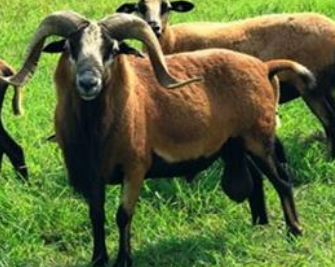
Figure 2: American Blackbelly ram
The Martinique
Sheep were introduced to the West Indies from colonization and more likely from the shores of the Gulf of Guinea in Africa. They are hairy sheep, closely related to the Djallonke sheep or West African types. The Martinik sheep is selected from Barbados Blackbelly. In 1993, the Martinik sheep benefited from the establishment of a breeding program based on seven private farms grouped together in a Selection Body (Union for the Selection of Martinik Sheep) approved by the Ministry of Agriculture. Carried out in collaboration between the various partners of the genetic sector in France, it was then possible to supply the breeders with sheep of well-known breeds, and evaluated on their results obtained in control of performances (Vertueux et al., 2006). Of recent creation, the Martinik sheep breed includes animals of various coats, but with very similar abilities. The adult sheep weighs on average from 35 to 45 kg and the rams from 50 to 70 kg, according to the conditions of breeding. The height at the withers for ewes is around 55cm. The small ears are borne horizontally and the tail is of medium length (above the hock); fertility is 85% and productivity 1.9 (USOM, 2008). Well-fed adult Martinik sheep are generally strong enough not to require anthelmintic treatment, with the exception of a few ewes around lambing, with litters of two or more lambs. Recent comparisons with woolen breeds have also demonstrated higher genetic resistance to parasites in Martinik lambs, making them an interesting breed for valorizing tropical pastures (INRA, 2014).

Figure 3: Martinik ram - (USOM, 2008):
Expansion to Europe
Europe was the decision point of the spread of Blackbelly sheep to the Caribbean and America through the triangular trade of the colonial era.
Germany
Originally, from West Africa, the path that led this wild sheep breed to Europe was unusual. In Germany around the 1900s, Zoological gardens were created. For this reason, ferocious beasts have been shipped from African colonial countries amongst which were lions and leopards. As provisions for wild animals, a breed of African sheep was brought. Some sheep survived these trips and started being reared. Germany empire was established in then called Kamerun from where the colonial administration extracted numerous living resources to Europe where traces are still visible. The cradle of Cameroon Blackbelly sheep is East Forest (Moloundou) where a small German colony was established in late 1800s. Sheep in parks and zoos have gained great popularity and today they are mainly found in amateur breeders, because the Cameroon sheep are convenient and robust landscapers. Called "Kamerun schafe" (Figure 4), Cameroonian sheep experienced a very good adaptation in Germany (Ladybug-Farm, 2010). Most black sheep breeders keep their sheep as meat suppliers. The objective is the proper formation of valuable pieces of meat on the back and leg. Animals slaughtered between 5 and 8 months for about 10- 16 kg of meat. The meat has a taste and appearance similar to that of game meat such as the usual lamb meat. The exquisite taste is not lost even in the slaughter of old animals.
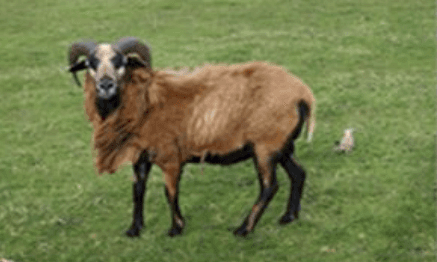
Figure 4: Kamerun schafe ram
Other European countries
The Cameroonian sheep has also been located in several other European countries, particularly in France, England and the Netherlands. Although the mechanisms of diffusion remain very difficult to trace, the authors agree that it was favored by the trade routes favored during the period of colonization. From Combs (1983) findings, Blackbelly sheep was introduced in England and Netherlands during the first quarter of 19th century. There have been some early breed associations and relatively interesting literature on this breed in Central and even eastern Europe which could have contributed to the popularization of this sheep genotype to Europe and other directions as pet or zoo animal (Mathieu, 1997).
Migration waves and spatial distribution Blackbelly sheep
Multiple movements of Blackbelly sheep occurred in several centuries, first northern to Europe and western as shown by the figure 5.
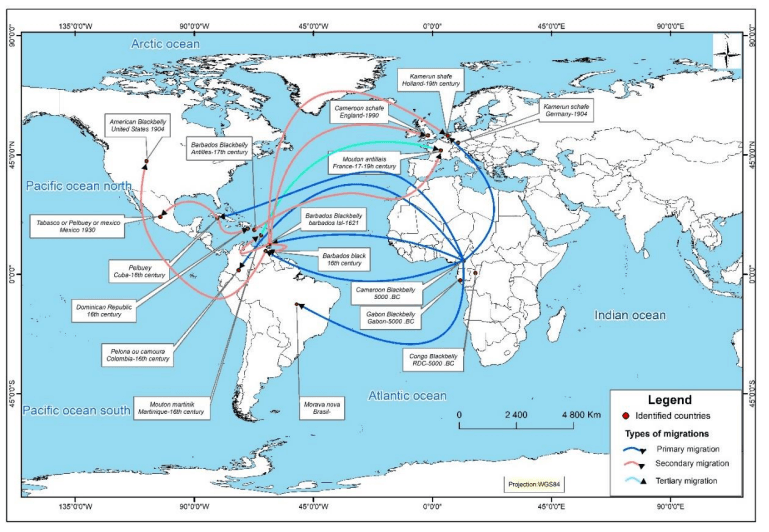
Figure 5: Map of Blackbelly sheep dispersal in the world
Primary migration
The very first documented migrations of the Blackbelly from Central Africa (its cradle) to other horizons which dated back from the 15th century. This migration was then factored by two main phenomena: the slave trade and the colonization. If the mechanisms are not clearly established on the primary migration of Blackbelly, it is recognized by several authors (Fitzhugh and Bradford, 1980; Mason, 1980; Shelton et al., 1990) that, these two phenomena had a great impact on the spread of this genetic material. The main countries with this primary migration waves were Barbados, Cuba, Brazil, Colombia and Trinidad and Tobago.
Secondary migration
After the transfer of this genetic resource from Africa to the Caribbean countries, other countries interested in the qualities of production, adaptation but especially disease resistance imported the Blackbelly sheep mainly from the Barbarian islands. These were mainly the United States of America and Martinique, and surprisingly from these sites to Europe (Great Britain and the Netherlands). In these new destinations, new varieties of Blackbelly sheep were developed with emphasis either on crossing or later on selection. The main mechanisms were importation and colonization (Rastogi et al., 1980, Naves et al., 2011).
Tertiary migration
The migration of Blackbelly sheep is continuous, within the various the host countries for several purposes, mainly adaptation. In the most recent migration traceable activities, France and Martinique were involved; it resulted in the development of the Martinik breed (Mathieu, 1997). Transboundary migration is also very common in Central Africa, though less documented.
Conclusion
The Blackbelly sheep, originated in tropical humid Africa, probably Central Africa and has become very popular throughout years. The breed popularity is based on its ability to adapt and its high prolificacy. Blackbelly sheep has been widely distributed throughout the world through the slave trade and triangular trade. There are various varieties, but all indicating the tendency for meat. In order to enhance its genetic potential, several countries have developed more productive genetic types through selection and double-crossing. The original traits remained the same in many of these breeds thus favoring the identification of their origin as Cameroon Blackbelly sheep. These movements of the colonial era will have had a major impact in the dissemination of animal material between Europe, Africa and America. Deeper molecular investigations are to be done to attest the genetic distances and news traits, while Cameroon government should invest more for the protection, ownership and valorization of this important biodiversity resource.
